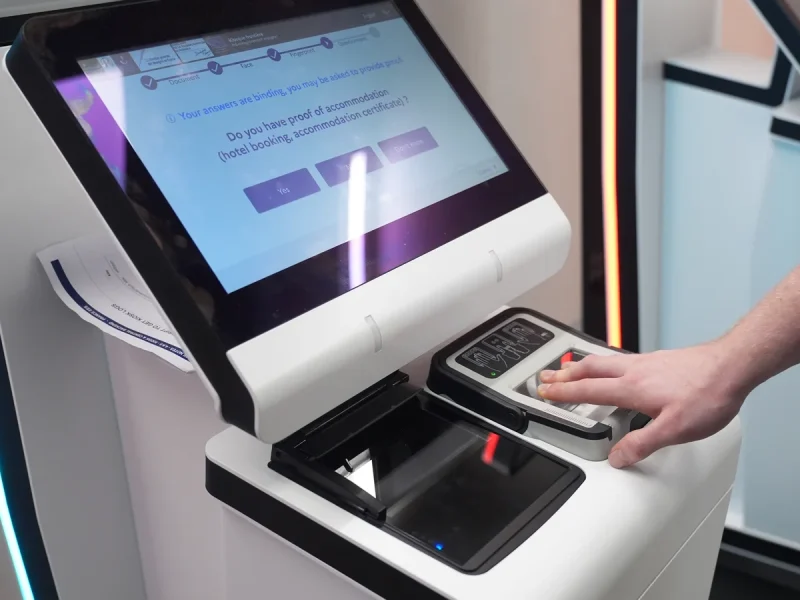LONDON — From October 12, traveling to Europe will change significantly for non-European Union citizens, including British, American, and other non-EU visitors, as the European Union’s new biometric Entry/Exit System (EES) officially comes into effect.
The EES is designed to modernize border management across the Schengen area, which covers 27 European countries (excluding Ireland and Cyprus) plus Iceland, Norway, Switzerland, and Liechtenstein. The system aims to replace manual passport stamping with a fully digital process, making entry and exit smoother while enhancing security and tracking overstayers.
How the EES Works
When a traveler enters the Schengen zone for the first time, they will need to scan their passport, register fingerprints, and take a facial image at an automated kiosk. This data will be securely stored in the EU’s central EES database, linking the person’s biometric information to their travel document.
Upon departure, the traveler’s details will be checked automatically against the system to confirm they have not overstayed the 90-day limit permitted for short visits within any 180-day period. On subsequent trips, travelers will only need to undergo a facial scan instead of full re-registration.
Children under 12 will also be registered but only require a photograph rather than fingerprints. Registration under the EES is free of charge for all travelers.
Why the EU Introduced the EES
The EU says the move is a critical step toward enhancing border security and reducing illegal migration. The system will allow authorities to spot identity fraud, track overstayers, and improve data accuracy.
According to the European Commission, digital border management will help streamline entry procedures, improve intelligence-sharing between countries, and reduce human error.
A spokesperson for the EU’s border agency Frontex stated, “EES is part of our broader vision to make Europe’s external borders both safer and more efficient through advanced technology.”
The system also supports the upcoming European Travel Information and Authorisation System (ETIAS), which will require travelers from visa-exempt countries (like the UK and US) to apply online before visiting the EU, expected to launch in mid-2026.
Where the Checks Will Take Place
The biometric checks will apply at airports, seaports, train stations, and road crossings into the Schengen area. At the Port of Dover, Eurotunnel terminal in Folkestone, and London St Pancras Eurostar station, EES registration will occur on departure from the UK, managed by French border officials.
Freight and coach traffic will be the first to undergo EES processing starting October 12, while car passengers and rail travelers will be added gradually in late 2025.
Will It Cause Delays?
The EU has said that the EES rollout will be gradual over the next six months to minimize disruption. However, the UK government and travel associations have warned travelers to allow extra time, especially during peak travel periods.
The Road Haulage Association has predicted potential “bottlenecks” at major ports until border officials and travelers adapt to the new system. Border officers will have the authority to suspend biometric checks temporarily if queues become unmanageable.
Officials expect the Easter 2026 holiday season to be the first major test of how efficiently the EES handles high passenger volumes.
Cybersecurity and Data Protection

The European Commission insists that the EES will operate under strict GDPR-compliant data protection rules. All biometric data will be stored securely and automatically deleted after three years unless linked to ongoing investigations.
Officials have emphasized that the system is designed with privacy safeguards, ensuring data is not shared beyond authorized EU border agencies.
Conclusion
The launch of the EU’s biometric Entry/Exit System marks a major shift in European border control, replacing passport stamps with a smart, data-driven framework. While the system promises faster processing and stronger security, it may initially lead to longer queues as both travelers and border officials adjust.
Once fully operational by April 2026, the EES will serve as a foundation for the EU’s next-generation travel management, ensuring safer and more transparent movement across Europe.
In other news also read about Why Nvidia Is Pouring Billions Into Elon Musk’s xAI — The $20 Billion Bet on the Future of Artificial Intelligence









